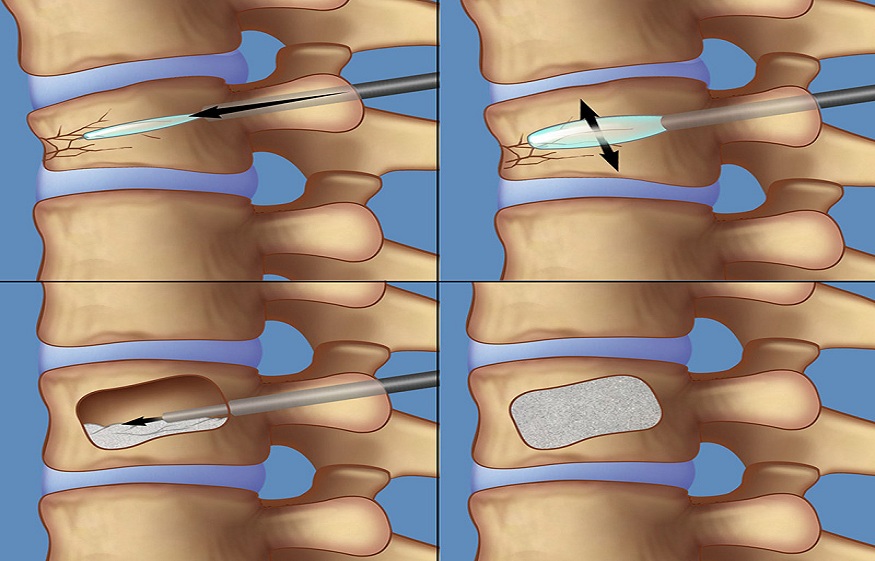Spinal fractures can significantly disrupt daily life, often resulting in pain, limited movement, and reduced independence. These injuries are especially common among older adults with osteoporosis or individuals who experience traumatic accidents. In the past, patients dealing with these fractures faced long recovery periods with limited mobility, but cement-based spinal procedures have changed that outlook. Dr. Larry Davidson, an experienced surgeon in the field, recognizes that timely intervention with cement-based techniques can not only stabilize the spine but also help patients regain movement and return to their routines faster.
Procedures such as vertebroplasty and kyphoplasty involve the injection of bone cement into the fractured vertebra, providing immediate internal support. For many patients, this support can make the difference between extended bed rest and being able to walk independently within days. These treatments have become an essential part of modern spinal care, offering a safe and effective way to manage pain and restore function after a vertebral compression fracture.
Understanding the Impact of Spinal Fractures on Mobility
When a vertebra collapses due to injury or bone weakness, it compromises the structural stability of the spine. It not only leads to localized pain but can also alter posture, reduce height, and limit the ability to walk, bend, or perform everyday tasks. Without sufficient support, the surrounding muscles and joints may compensate in harmful ways, contributing to further discomfort and fatigue.
For many individuals, the loss of mobility has a ripple effect. It can lead to muscle deconditioning, increased fall risk, and social isolation. Once active patients may become dependent on assistance, which can affect mental health and overall quality of life. The goal of treatment, therefore, goes beyond pain management. It is about restoring physical capability.
How Cement-Based Procedures Support Recovery
Vertebroplasty and kyphoplasty are two of the most commonly performed cement-based treatments for spinal fractures. These procedures are minimally invasive and generally completed in under an hour. Using real-time imaging, a needle is guided into the fractured vertebra, where bone cement is injected to stabilize the bone.
In kyphoplasty, an additional step is taken before the cement is placed; a small balloon is inflated within the vertebra to restore lost height and create a cavity. Once the cavity is formed, the balloon is removed, and cement is added. This technique can help partially restore spinal curvature and alignment, which contributes directly to improved posture and movement.
Reducing Pain to Encourage Movement
Pain is one of the greatest barriers to mobility after a spinal fracture. Even minor movement can be difficult when vertebrae are unstable. Cement-based procedures address this by eliminating micromovements in the fractured area, which are a common source of pain.
With the spine stabilized, patients can begin to move more naturally, often without the need for strong pain medication. Reducing reliance on narcotics not only supports clearer thinking and better coordination but also lowers the risk of side effects such as dizziness or gastrointestinal issues, which are common concerns in older adults.By removing pain as an obstacle, cement-based solutions empower patients to participate in physical therapy and regain confidence in their movements, both of which are key factors in long-term recovery.
Restoring Function in Daily Life
One of the most immediate benefits of these procedures is the ability to return to routine activities. Many patients find that tasks such as getting out of bed, climbing stairs, or preparing meals become manageable again. This renewed independence can have a powerful effect on a person’s outlook and motivation.
Dr. Larry Davidson points out, “Personalizing treatment based on each patient’s unique anatomy and fracture pattern allows us to deliver better results and reduce the risk of complications.” Each procedure is tailored to the patient’s specific fracture and bone condition. Advanced imaging tools help guide the cement precisely, ensuring optimal support with minimal risk. This attention to detail improves not just the procedure’s effectiveness, but also the speed and quality of the recovery.
Combining Procedures with Rehabilitation
While cement-based treatments offer immediate structural support, recovery doesn’t end in the operating room. Most physicians recommend follow-up care that includes physical therapy and exercises tailored to restore core strength, balance, and flexibility.
Rehabilitation plays a key role in sustaining the mobility gains achieved through vertebroplasty or kyphoplasty. Movement helps prevent stiffness and strengthens the muscles that support the spine. For patients with osteoporosis, weight-bearing activities and strength training are often incorporated to reduce the risk of future fractures.The goal is to build on the initial success of the procedure by reinforcing healthy movement patterns and empowering patients to take an active role in their recovery.
Preventing Future Setbacks
Improved mobility after a spinal fracture is a positive step, but preventing additional fractures is equally important. Cement-based procedures don’t reverse bone loss, so ongoing management of bone health remains a critical part of post-procedure care.
Patients are often referred for bone density testing and, when necessary, prescribed medications such as bisphosphonates or other therapies to strengthen bone. Nutritional support, including adequate calcium and vitamin D, along with fall prevention strategies, is also emphasized.By combining spinal stabilization with long-term bone care, providers help ensure that the procedure benefits are maintained over time.
A Safe and Effective Option for Many Patients
Vertebroplasty and kyphoplasty have been widely studied and shown to be both safe and effective, especially when performed early after a fracture is identified. Most complications are rare, and advances in cement viscosity and imaging have made the procedures even safer in recent years.
Patients who are candidates for cement-based spine stabilization often include those with:
- Acute or subacute compression fractures
- Moderate to severe pain unresponsive to medication
- Osteoporotic bone makes surgical recovery difficult
- A desire to avoid prolonged bed rest or narcotic use
Each case should be evaluated individually, and treatment decisions should be made in consultation with a spine specialist who can assess imaging, medical history, and functional goals.
Helping Patients Move Forward
Improving mobility after a spinal fracture isn’t just about addressing the immediate injury. It’s about helping patients reclaim their independence and quality of life. Cement-based spinal procedures like vertebroplasty and kyphoplasty offer a reliable, minimally invasive way to achieve that outcome.
Cement-based procedures tailored to each patient’s needs enable faster recovery and safer movement. For those facing the challenges of a spinal fracture, these solutions provide not just relief from pain but a return to the freedom of movement that supports a full and active life.













